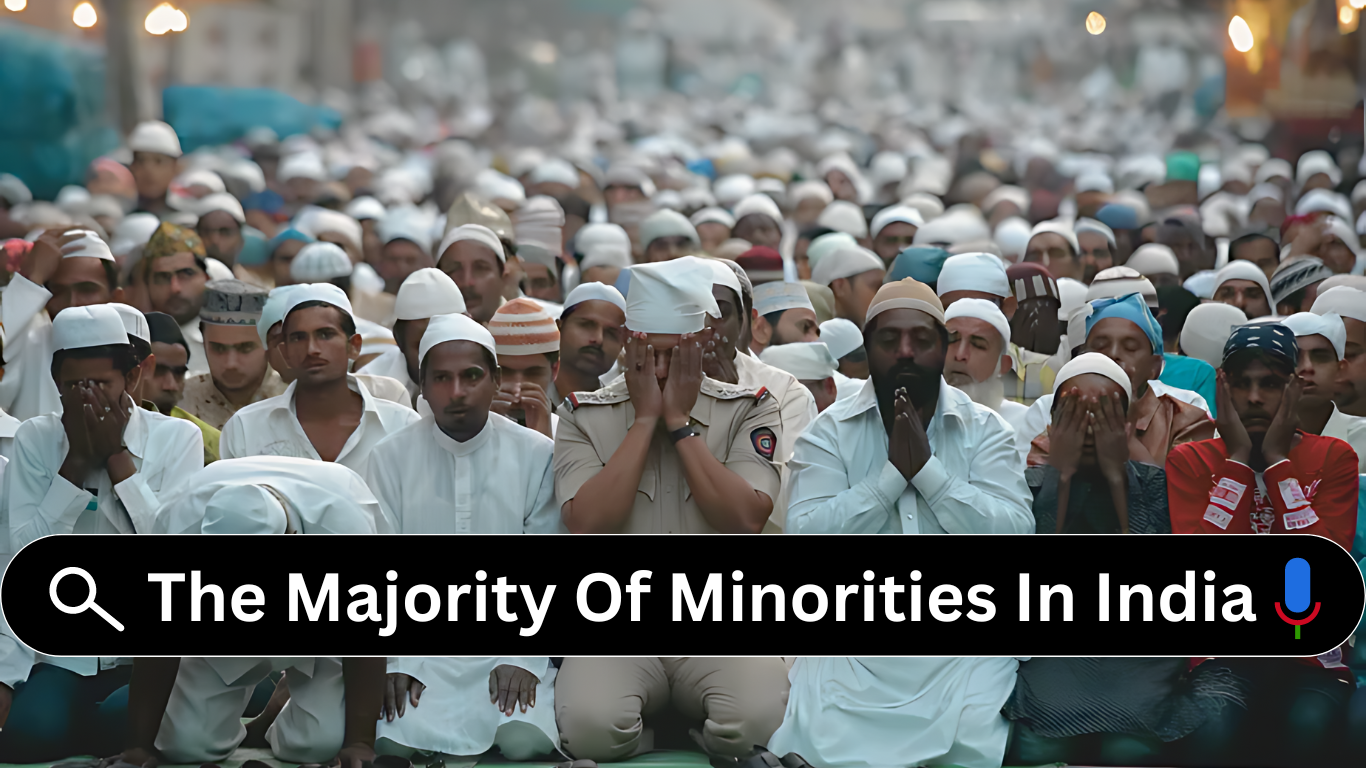The Economic Advisory Council (EAC) to the Prime Minister has unveiled a fascinating working paper shedding light on global trends in the share of religious minorities and majorities. With a thorough examination of over 167 countries spanning 65 years, the report presents intriguing findings.
Political changes are mere symptoms of deeper structural changes happening in societies, of which demographic change is an important component. Dr @ShamikaRavi, Abraham Jose & Apurv Mishra write in this latest EAC-PM Working Paper. 1/8 https://t.co/Er8nNO97dw pic.twitter.com/WjByrOJUwD
— EAC-PM (@EACtoPM) May 7, 2024
Notably, India’s Hindu population decreased by 7.82%, almost 8%, between 1950 and 2015, while the Muslim population saw a remarkable 43.15% increase during the same period.
India has witnessed an increase in the share of Minority groups – Muslim, Christian, Buddhist and Sikh; and a decline in the share of Jain and Parsis. This is particularly noteworthy, given the South Asian neighbourhood as depicted in the map in the previous tweet. 8/8
— EAC-PM (@EACtoPM) May 7, 2024
Amidst these figures, the global media consistently portrays India as a country where Muslims are persecuted. But do these statistics support such perceptions? More importantly, what drives this significant boom in the Muslim population? When we contrast these trends with the stark situations faced by minorities in neighboring countries, such as Bangladesh where the Hindu population declined by 66%, or West Pakistan with an astonishing 80% drop, it begs the question.
Minority communities in Afghanistan, Iran, Iraq, and even Syria, Libya, and Algeria face daunting challenges. However, in India, Muslim minorities are thriving with a notable 43.15% increase in population share. The numbers speak for themselves and this brings us to the five crucila questions:
1. Is a rising Muslim population in India a sign of hope or persecution?
2 – Do Indian Muslims realise that fate of Hindus in Islamic nations causes fears?
3 – Why is India’s record questioned on Muslims, not Islamic nations on Hindus?
4 – If education & economic progress reduce fertility rates, will vikas of Indian Muslims balance stabilise numbers?
5 – How do we address those fearing that Muslim population rise is an Islamist demographic change push?
NewsX Exclusive discussion With Sr Consulting Editior – Vineet Malhotra:
Dr. Abbas kicks off by tackling the question head-on: “What’s behind the surge?” And if there is indeed an explanation, then perhaps the ecosystem isn’t as fear-inducing as some may believe.
Now, onto the answer: I’ve got my doubts about the report that just hit the shelves. Why? Well, the 2021 census was on the agenda, but it’s nowhere to be seen yet. If you need confirmation, just swing by and ask PM Modi Ji himself. There’s a solid truth in the census report, backed by empirical data, concrete evidence, group formations, intricate formulas, and a meticulously laid-out strategy.
But here’s the kicker: the BJP seems to be on shaky ground in this election battle, so they’re resorting to stoking the flames of this Hindu-Muslim divide.
To Zeenat Shaukat Ali : Is the education factor playing a role, as if it were then there wouldn’t be a surplus rise in the population of the community?
However, there are multiple aspects to consider. With India being a land of diverse religions, the absence of a census since 2021 raises significant concerns. The postponement of a decentralized census by 150 years adds another layer of complexity. Amidst this backdrop, we encounter yet another report. What does this all mean?
The discussion at hand certainly isn’t about defaming any community. Instead, it’s about celebrating the fact that despite neighboring countries like Pakistan, China, and Bangladesh where Muslims face adversity, India stands out. The point you’re making, Venet, holds validity. Nevertheless, the world is evolving, and perspectives are shifting.
MD. Ali Shah:
Abbas said, “I vehemently condemn his statement; it’s blatantly racist. In this instance, Congress and Sam Pitroda are unequivocally in the wrong. And when I criticize Congress, it’s because they are unequivocally wrong. Two wrongs don’t make a right.”
Watch Video:
















